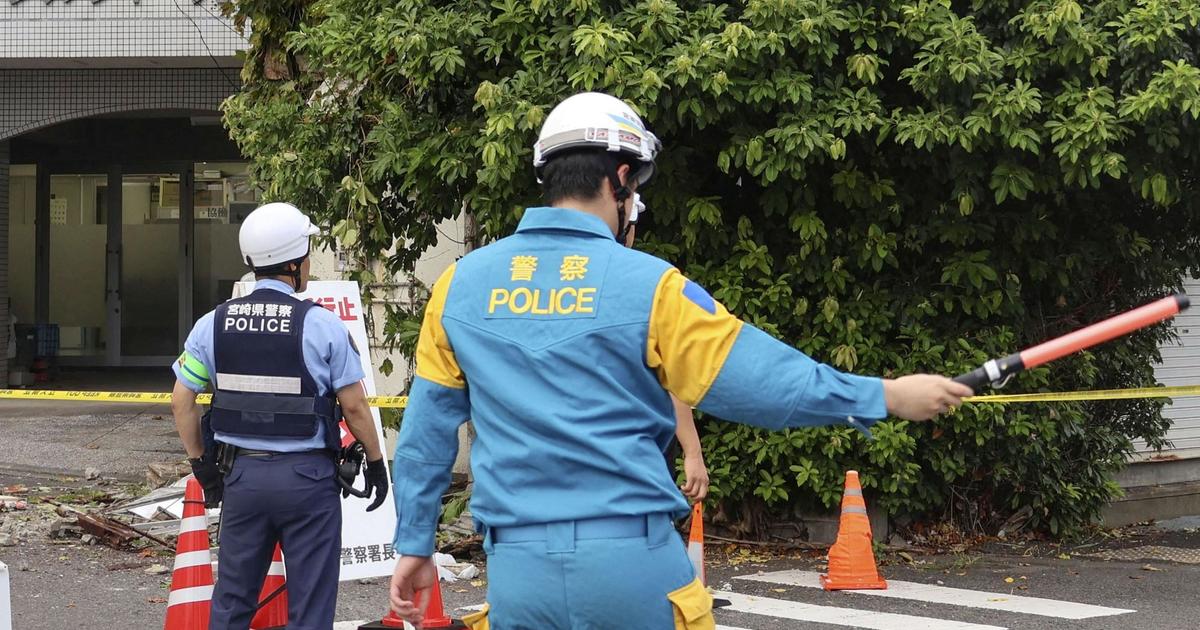A robust earthquake struck off southern Japan on Thursday, inflicting principally minor accidents however elevating the extent of concern over potential main quakes stemming from an undersea trough east of the coast.
The quake prompted seismologists to carry an emergency assembly by which they raised the extent of threat of main quakes related to the Nankai Trough — the supply of previous devastating earthquakes — east of southern Japan. They issued an evaluation that the potential for a future quake within the space from Kyushu to central Japan is larger than beforehand predicted.
The company stated it’ll proceed to intently watch actions of plates close to the Nankai Trough.
That doesn’t imply there’s an imminent hazard of an enormous quake within the close to future, however they urged residents on the coasts alongside the trough — which spans about 500 kilometers (310 miles) — to evaluation their quake preparedness, College of Tokyo seismologist Naoshi Hirata, a member of an knowledgeable panel, informed a joint information convention with JMA officers.
There’s a 70-80% likelihood of a magnitude 8 or 9 quake stemming from the Nankai Trough inside the subsequent 30 years, Hirata stated, including that Thursday’s quake raises that likelihood even whereas the timing or precise location can’t be predicted. He urged residents to maintain their warning ranges excessive for per week in the interim.
Thursday’s quake registered magnitude 7.1 and was centered in waters off the jap coast of Kyushu at a depth of about 30 kilometers (about 19 miles) beneath sea floor, the Japan Meteorological Company stated. The quake most strongly shook Nichinan metropolis and close by areas in Miyazaki prefecture on Kyushu island.
The company stated tsunami waves of as much as 50 centimeters (1.6 ft) have been detected alongside components of Kyushu’s southern coast and the close by island of Shikoku a few half hour after the quake struck. Tsunami advisories have been issued, however lifted for many areas three hours later, and for all remaining coastlines 5 and a half hours later.
Officers stated 9 individuals have been injured on Japan’s southern primary island of Kyushu, however the accidents have been principally minor. There have been no studies of great harm.
Prime Minister Fumio Kishida informed reporters that the federal government disaster administration group was to step up catastrophe preparedness, and known as on residents to pay shut consideration to data from the authorities in case of one other large one and by no means to unfold disinformation.
The United States Geological Survey gave Thursday’s earthquake a yellow alert for estimated financial losses, that means “some harm is feasible and the affect must be comparatively localized.” It gave the quake a inexperienced alert for estimated fatalities, that means “there’s a low chance of [shaking-related] casualties.”
JMA Seismology Division official Shigeki Aoki warned that robust aftershocks might happen for a few week.
Japan’s NHK public tv stated home windows have been damaged on the Miyazaki airport close to the epicenter. The airport’s runway was quickly closed for security checks.
Kyushu “shinkansen” super-express trains returned to regular operations after non permanent security checks, however quite a lot of native practice traces within the quake-hit areas have been to be suspended via Friday, in line with Kyushu Railway Co.
NHK confirmed dozens of individuals gathering at a chosen hilltop evacuation space.
In Osaki in neighboring Kagoshima prefecture, concrete partitions collapsed and a wood home was broken, however no accidents have been reported.
The Nuclear Regulation Authority stated all 12 nuclear reactors, together with three which can be presently working, on Kyushu and Shikoku remained protected.
Earthquakes in areas with nuclear energy crops have been a significant concern since an enormous earthquake and tsunami in March 2011 triggered the Fukushima nuclear catastrophe.
Japan sits on the Pacific “Ring of Fireplace,” a line of seismic faults encircling the Pacific Ocean, and is likely one of the world’s most earthquake-prone nations.
An earthquake on Jan. 1 in Japan’s north-central region of Noto left greater than 240 individuals useless.
Haley Ott
contributed to this report.
